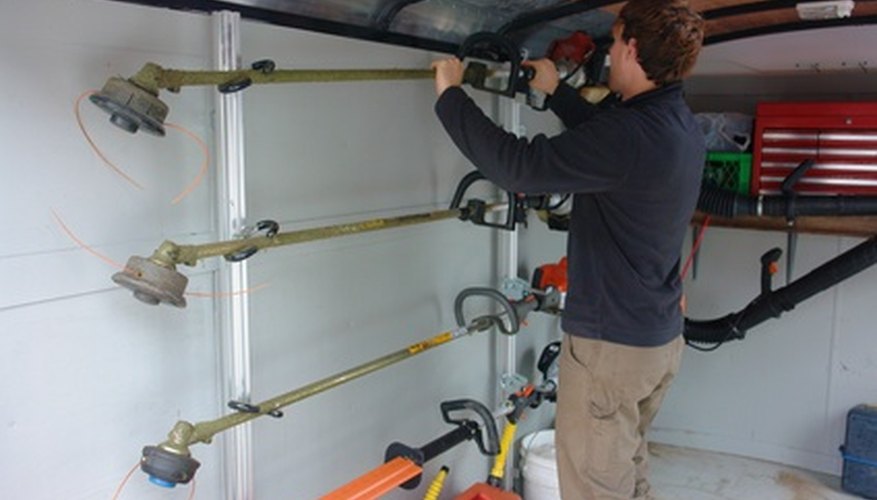The choke settings on a trimmer are manual controls that allow you to regulate the fuel and air mixture in the carburettor when starting the engine. The choke lever opens and closes a vent on the mixing chamber of the carburettor. This vent regulates air from the filter; when it's closed (choke is on), the air is blocked giving the fuel a richer mixture. When the lever is open (choke is off), air flows in from the air filter. A problem occurs when the fuel flow is low when the choke is off.
- The choke settings on a trimmer are manual controls that allow you to regulate the fuel and air mixture in the carburettor when starting the engine.
- This vent regulates air from the filter; when it's closed (choke is on), the air is blocked giving the fuel a richer mixture.
Start the trimmer and let it run in choke. Unscrew the gas cap about halfway and take the choke off. If the engine continues to run, the check valve on the gas cap is plugged. Take the cap off and clean it with the brush, using warm, soapy water. Replace it if it's too dirty to clean.
Pour out any remaining fuel in the tank into an approved fuel container. Unscrew the air filter cover and remove the air filter from its mounting. Unscrew the choke cover plate screws, which sit above and below the air filter's mounting plate.
Disconnect both of the fuel lines from their elbow connectors on the carburettor. Using the needle-nose pliers, pull out the fuel filter and fuel line through the gas tank, and throw them away. Pull out the return line through the gas tank or from the carburettor's side, whichever is easiest.
- Pour out any remaining fuel in the tank into an approved fuel container.
- Using the needle-nose pliers, pull out the fuel filter and fuel line through the gas tank, and throw them away.
Install the new fuel lines into the engine. Push them both through their holes inside the gas tank. Hook them up to the carburettor and install the new fuel filter to the main fuel line.
Unscrew the carburettor's mounting screws and pull it off the engine. Inspect the gaskets and seals around the carburettor. They shouldn't be too dirty and should hold a tight air seal around the carburettor and crankcase.
Disassemble the carburettor. Unscrew the valve covers and remove the metering arm and needle valve. Inspect the diaphragm and replace thet carburettor if warping is present. Make sure the needle valve is properly sitting on the metering arm.
- Unscrew the carburettor's mounting screws and pull it off the engine.
- Unscrew the valve covers and remove the metering arm and needle valve.
Clean all of the carburettor's parts in a carburettor cleaner solution. Soak them overnight if they are heavily coated with dirt and gunk. Scrub them clean with the brush.
Reassemble the carburettor using a carburettor kit. Replace all of the seals, filters, screens, Welch plugs and valve covers with parts from the replacement kit. Replace the seal and gasket in between the carburettor and the crankcase.
- Clean all of the carburettor's parts in a carburettor cleaner solution.
- Replace the seal and gasket in between the carburettor and the crankcase.
Take the engine to a mechanic if the problem still persists. It is likely the problem lies somewhere from your crankshaft to your piston, which are repairs that should be done only by qualified professionals.
